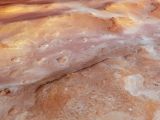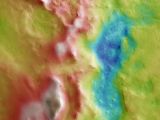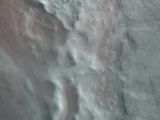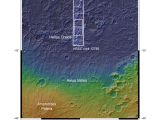The holidays are coming, and by the looks of it, astronomers are dead set on putting us in a good mood. Thus, shortly after the release of a gorgeous image of the Wishing Well Cluster, yet another stunning space picture hit the public eye.
This second image, available in the gallery below, shows part of the surface of Hellas Basin, a freakishly large impact basin on Mars. It was obtained with the help of the Mars Express spacecraft earlier this year.
More precisely, it was taken using the spacecraft's High Resolution Stereo Camera on January 23. In this space image, the north is to the right and the west is at the top, the European Space Agency explains in a statement.
A short history of Mars' Hellas Basin
As mentioned, Hellas Basin is an impact crater on the Red Planet. This geological structure on Mars is estimated to have formed some 3.8 billion to 4.1 billion years ago. According to evidence at hand, the planet was bombarded heavily by asteroids and comets in those days.
Following its formation, Mars' Hellas Basin was further transformed by local winds, volcanic activity, ice and water. For the time being, this impact basin on the Red Planet measured about 7 kilometers (approximately 4.4 miles) in depth.
Hellas Chaos is covered in carbon dioxide frost
The image released by the European Space Agency this past November 27 shows part of Mars' Hellas Basin. This region, located in the basin's southern central part, is known to the scientific community as Hellas Chaos.
What makes this patch of land on the Red Planet so very special to astronomers is the fact that it is almost entirely covered in carbon dioxide frost. Thus, it is only the central ridges featured in this image that appear to be frost-free.
“Much of the scene is dusted with carbon dioxide frost, although in places the underlying surface is exposed. In contrast to the frosty terrain, the ridges running through the center of the image appear golden, probably from the low Sun angle.”
“A few distinct impact craters can also be seen in this scene. For example, at the bottom right, one with a layered rim exhibits some dark internal streaks that could be dunes shaped by prevailing winds,” scientists with the European Space Agency explain.
Mars' Hellas Chaos is said to stretch about 200 kilometers (some 125 miles) from north to south and 500 kilometers (roughly 310 miles) from east to west. For the time being, researchers cannot say for sure how and why this region formed.
Thus, some say that the Chaos was birthed by sediment deposits sculpted by wind and water. Others believe that lava flows originating from the nearby Amphitrites Patera volcano created the multitude of landforms in this corner of the Red Planet.
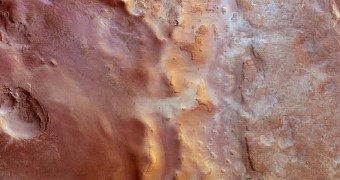
 14 DAY TRIAL //
14 DAY TRIAL // 
